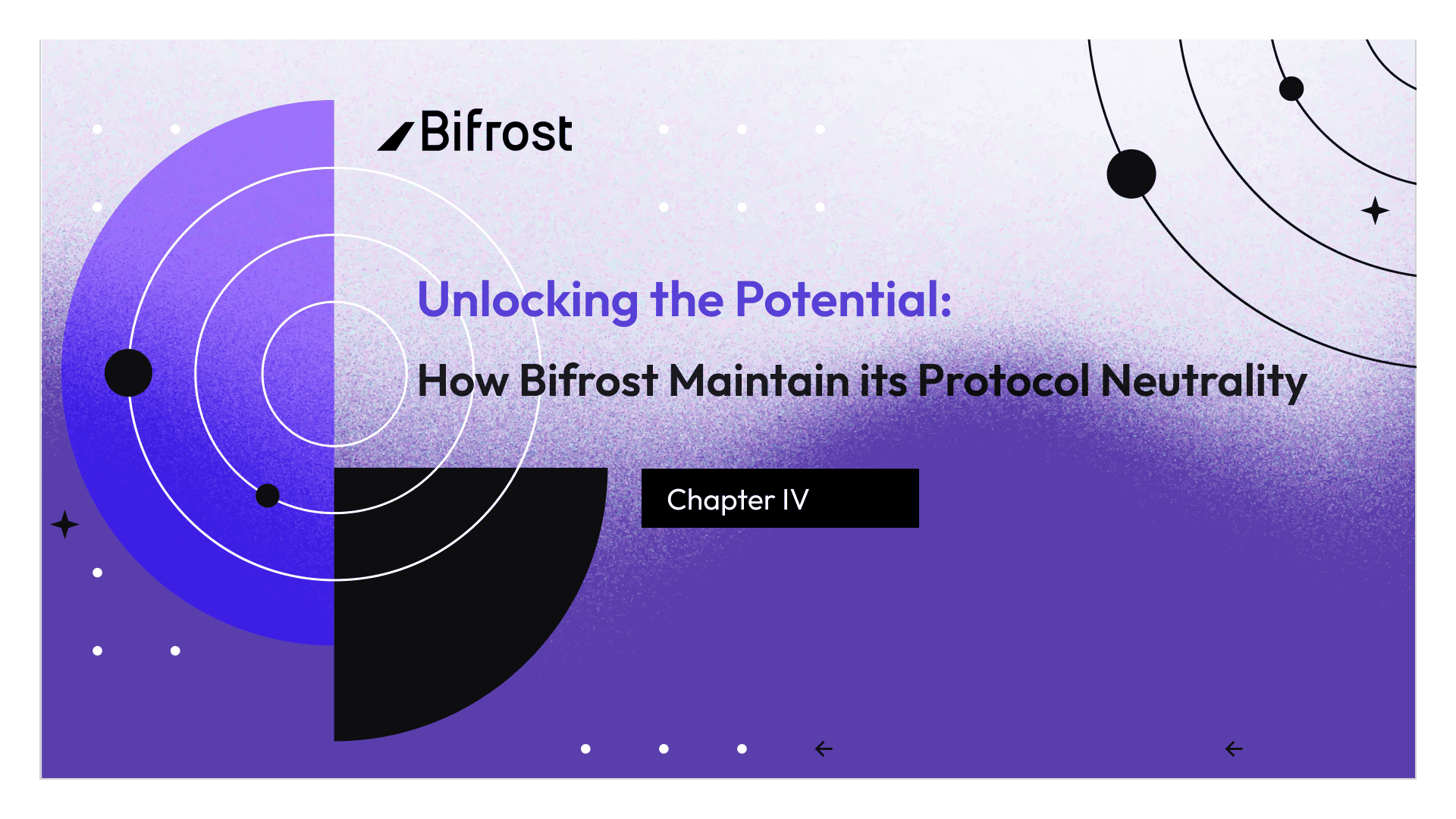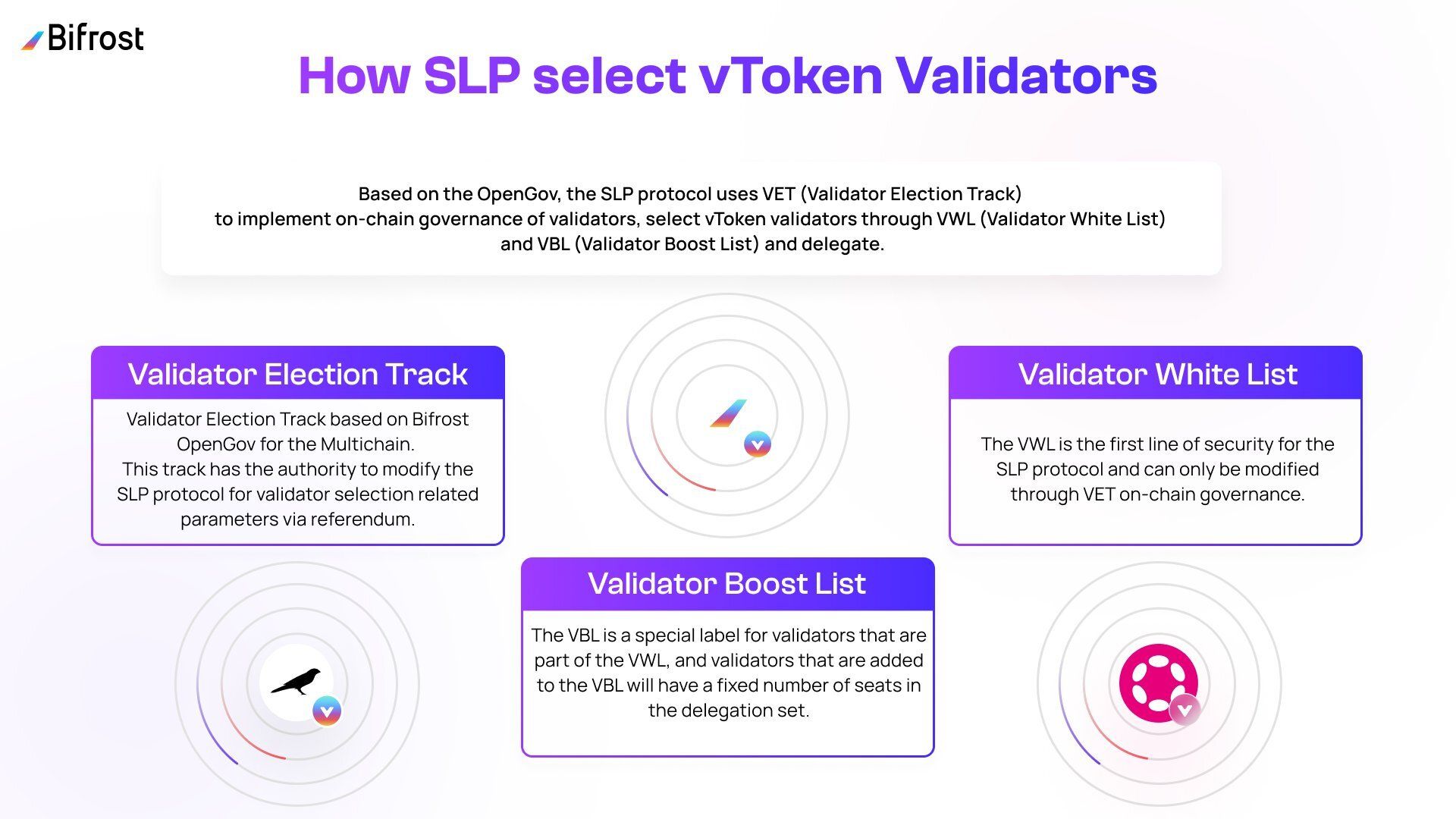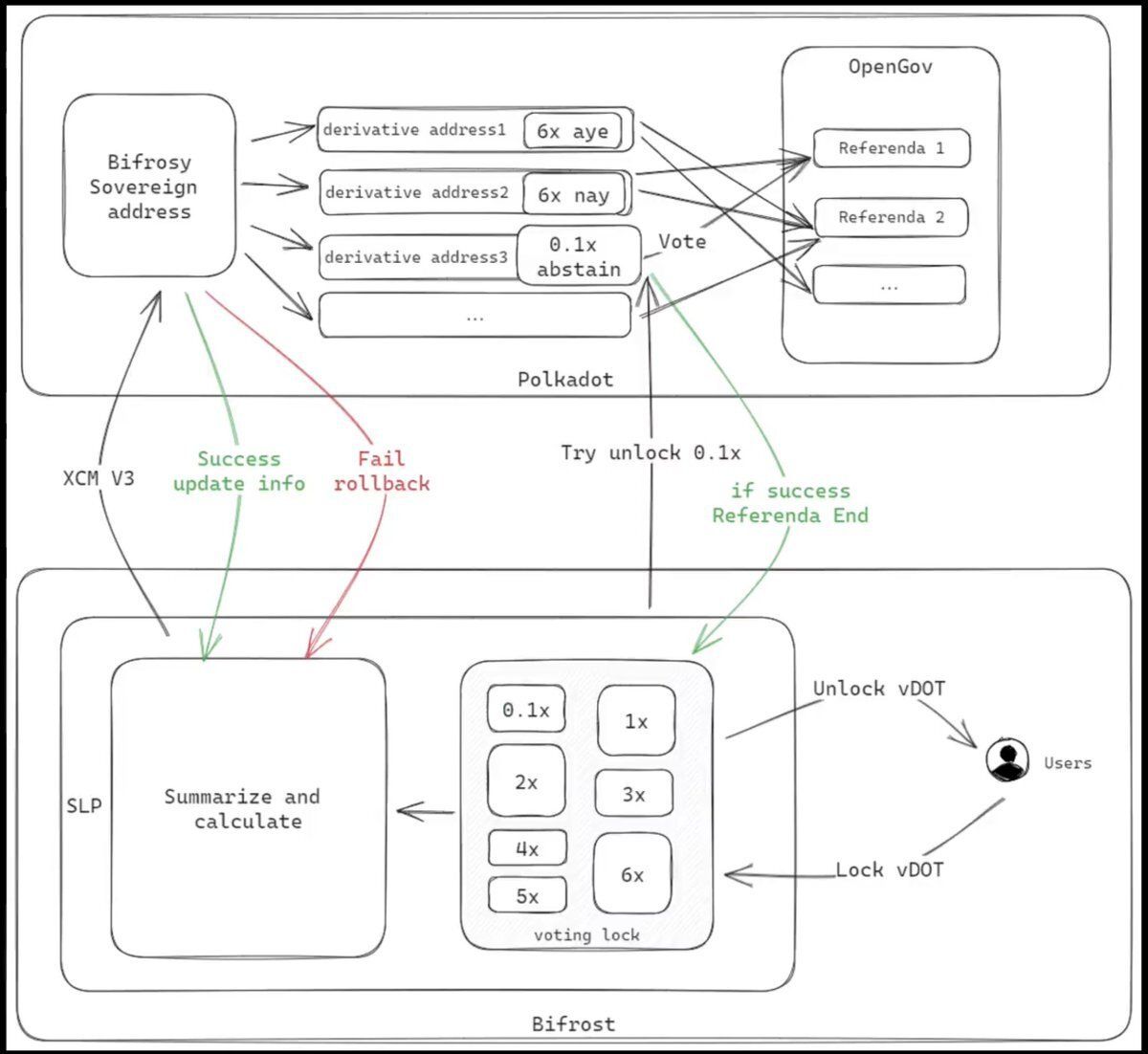
After removing the sudo keys in September 2021, Bifrost adopted a tricameral governance system based on Polkadot Gov1.0. Following Polkadot's transition from Gov 1.0 to OpenGov, Bifrost has completed its own governance upgrade. It now employs fully decentralized governance through OpenGov, allowing vBNC holders to participate in decision-making via referendum proposals.
Customizing the principles and mechanisms of Polkadot OpenGov, Bifrost has tailored and customized its governance to fit its business needs. This customization is mainly reflected in the establishment of 8 tracks that are highly relevant to Bifrost's operations. For more details, please read Bifrost Governance Tracks.
First and foremost, to maintain neutrality, Bifrost does not run its own nodes. All validator sets for vTokens are elected through governance voting. Among the 8 governance tracks, the most commonly used one is for the election of validator sets.
The validator set for vTokens is divided into two parts: the Validator White List (VWL) and the Validator Boost List (VBL). The VWL is created based on a set of clear evaluation criteria and confirmed through referendum proposals. The VBL consists of nodes that apply proactively and are approved by community voting. The SLP protocol will only delegate staked assets to nodes listed in these two lists.

VWL validators are scored according to the defined scoring rules. Validators with a score above the threshold will automatically obtain the VWL qualification without actively applying.
The main factors that affect the score include:
Based on these factors, Bifrost periodically evaluates and selects eligible validator sets, which are then confirmed through referendums.
The VBL is reserved for nodes that provide additional value. Nodes can apply to the Bifrost community through governance proposals. Once a referendum is passed, the node can officially enter the VBL. We expect VBL validators to provide added value to the SLP protocol or vToken holders to promote the long-term development of the protocol. The value provided can be in any of the following forms:
For more details on the selection of the SLP node set, you can refer to this article:VET - Validator Election Track Based on Bifrost OpenGov for The Multichain
Bifrost maintains neutrality by avoiding interference with the chain’s governance. This ensures decentralized decision-making remains intact, empowering the community to control the protocol. This neutrality is evident in the following forms:
Decentralization in Validator Elections
When electing validator sets, Bifrost considers the decentralization factor. This is not only for its own security but also to minimize its impact on the distribution of validators within the PoS chain. The validator elections are voted on by token holders, ensuring full decentralization of the selection process.
Governance Participation

An important right for token holders is participating in governance. For instance, holding or staking DOT allows users to participate in the governance of Polkadot through OpenGov.
When users delegate their DOT to Bifrost through liquid staking, Bifrost indirectly captures a portion of these governance rights. However, Bifrost fully returns these governance rights to stakers through the vToken voting mechanism. Both vDOT and vKSM holders can use their vTokens to participate in the governance of Polkadot and Kusama. This is a unique approach not seen in other liquid staking protocols.
The principle behind the vToken voting mechanism is that when holders use their vTokens to vote, the vToken governance module maps these votes using the staking tokens in the pool. Currently, this mechanism is implemented with vDOT and vKSM.
Bifrost's commitment to maintaining protocol neutrality is evident through its comprehensive and decentralized governance framework. By transitioning from Polkadot Gov1.0 to OpenGov, Bifrost empowers vBNC holders to actively participate in decision-making via referendum proposals. This ensures that the community retains control over the protocol, fostering a truly decentralized environment.
Bifrost's neutrality is further emphasized in its approach to validator elections for vTokens. By not running its own nodes and relying on governance voting to elect validator sets, Bifrost minimizes its influence and promotes a fair, balanced selection process. The Validator White List (VWL) and Validator Boost List (VBL) ensure that only qualified nodes are selected based on rigorous criteria, maintaining the integrity and security of the network.
Additionally, Bifrost's unique vToken voting mechanism allows token holders to participate in governance, distinguishing it from other liquid staking protocols. This mechanism ensures that governance rights are fully returned to stakers, reinforcing Bifrost's commitment to neutrality.
In summary, Bifrost's meticulous governance structure, fair validator election process, and innovative voting mechanisms collectively uphold its status as a neutral and equitable LST protocol. These efforts ensure that the community remains at the heart of Bifrost's operations, fostering a decentralized and transparent ecosystem.